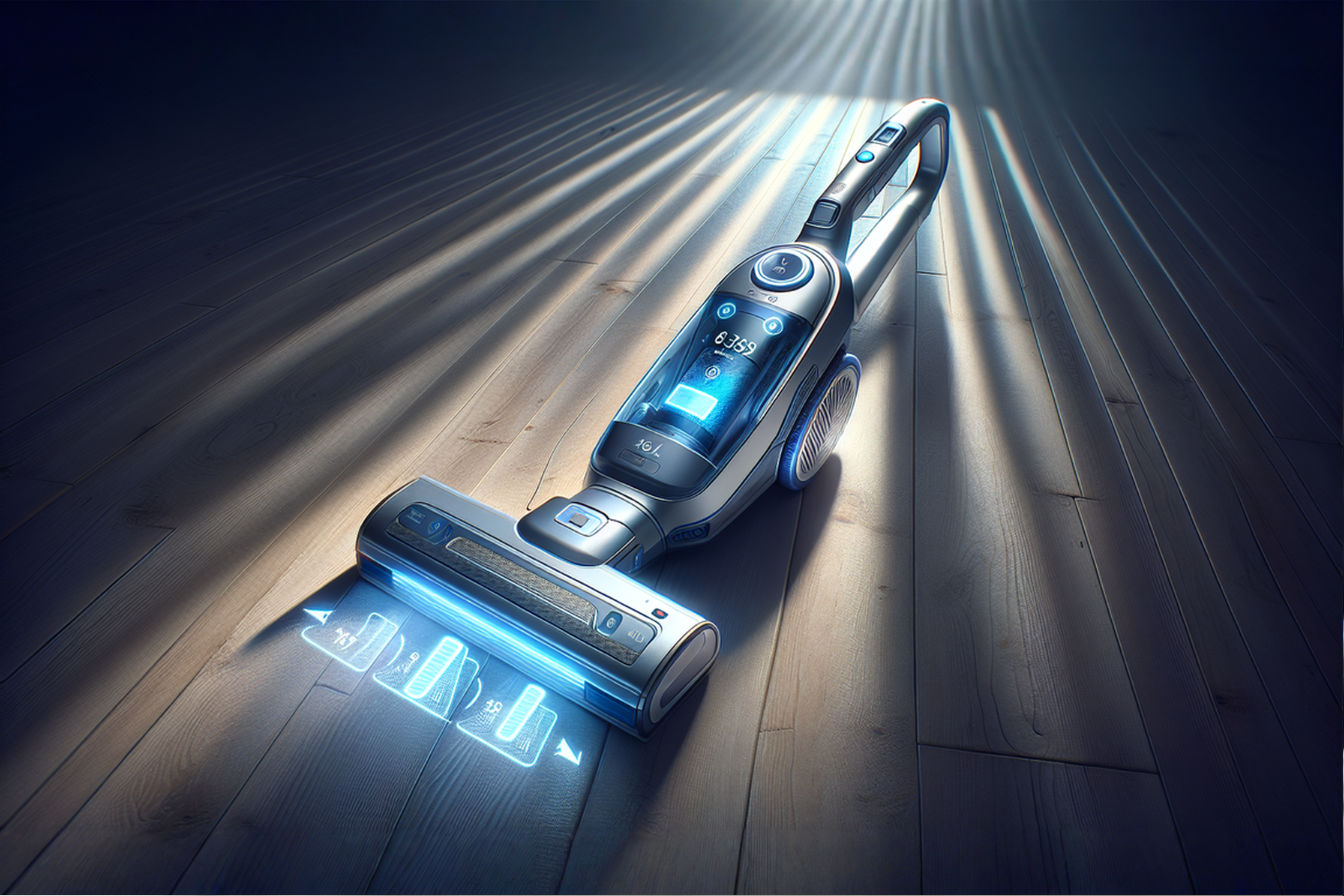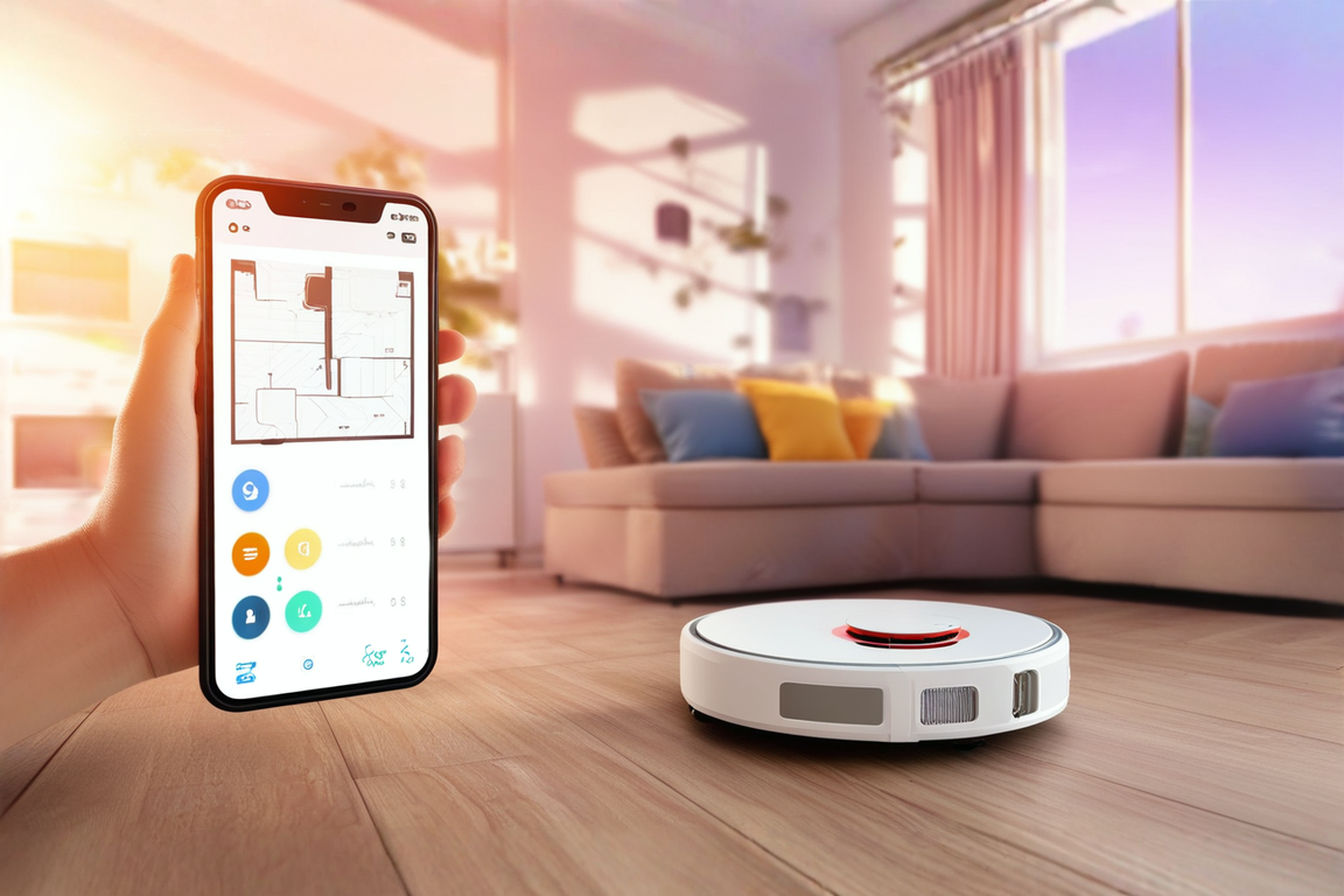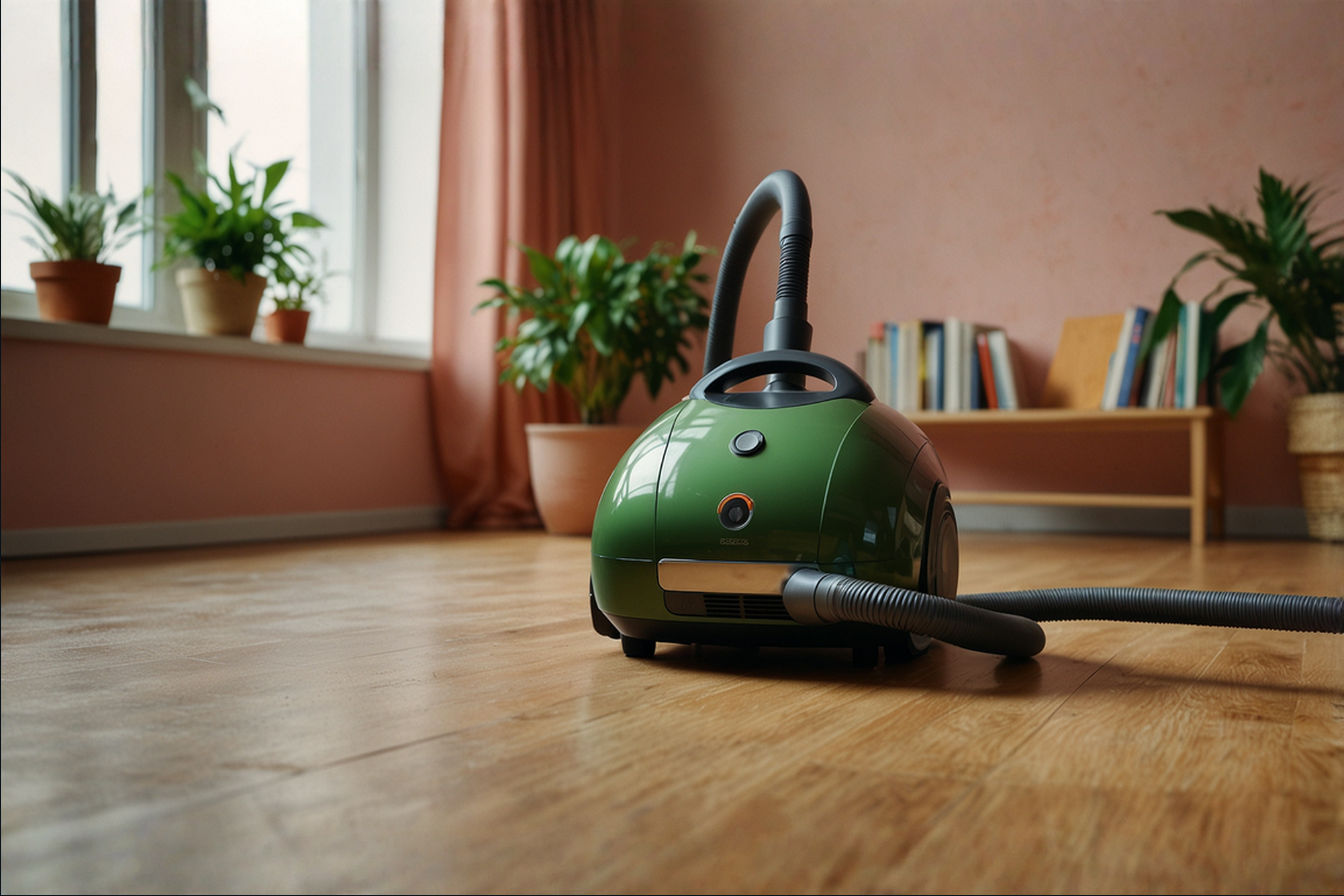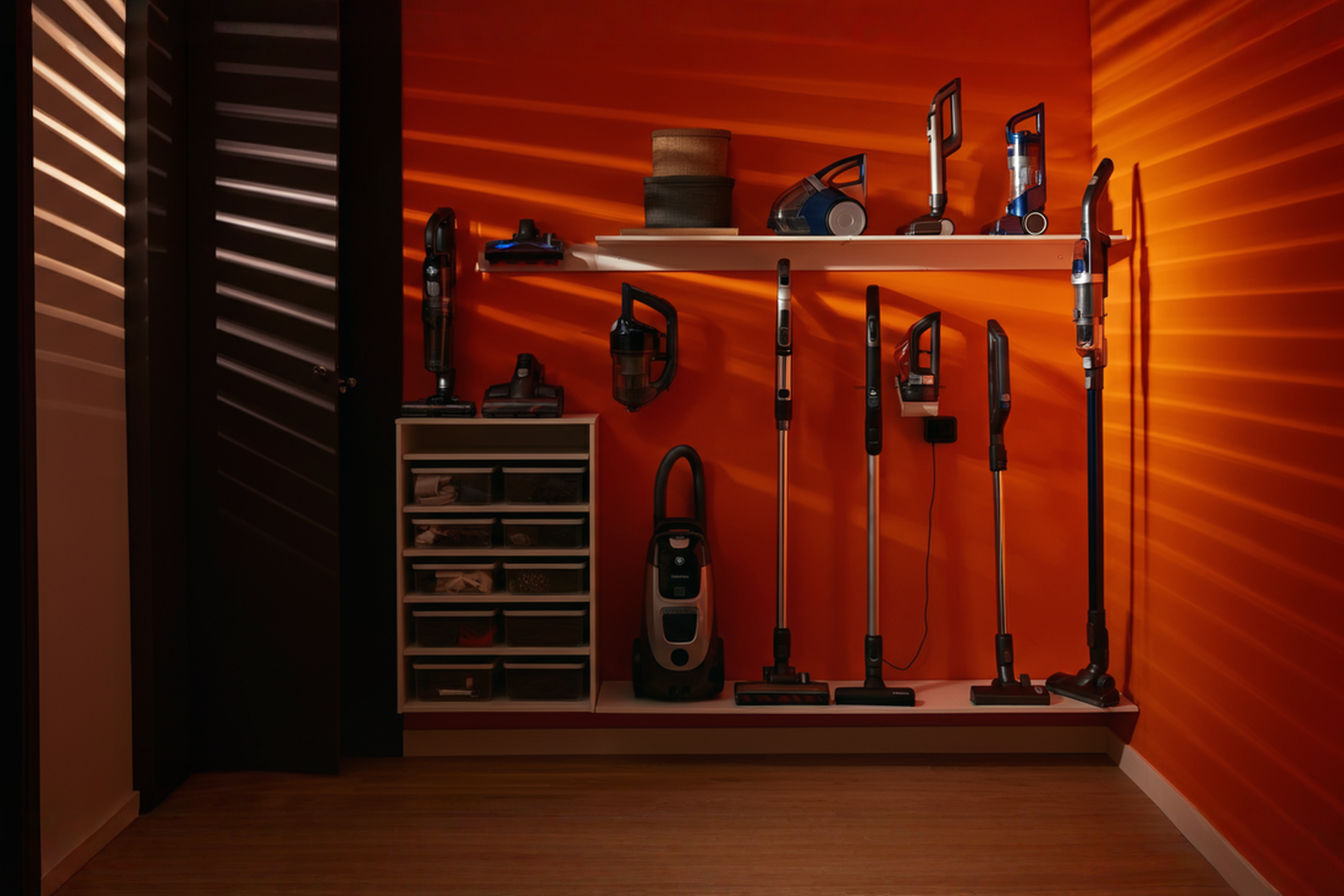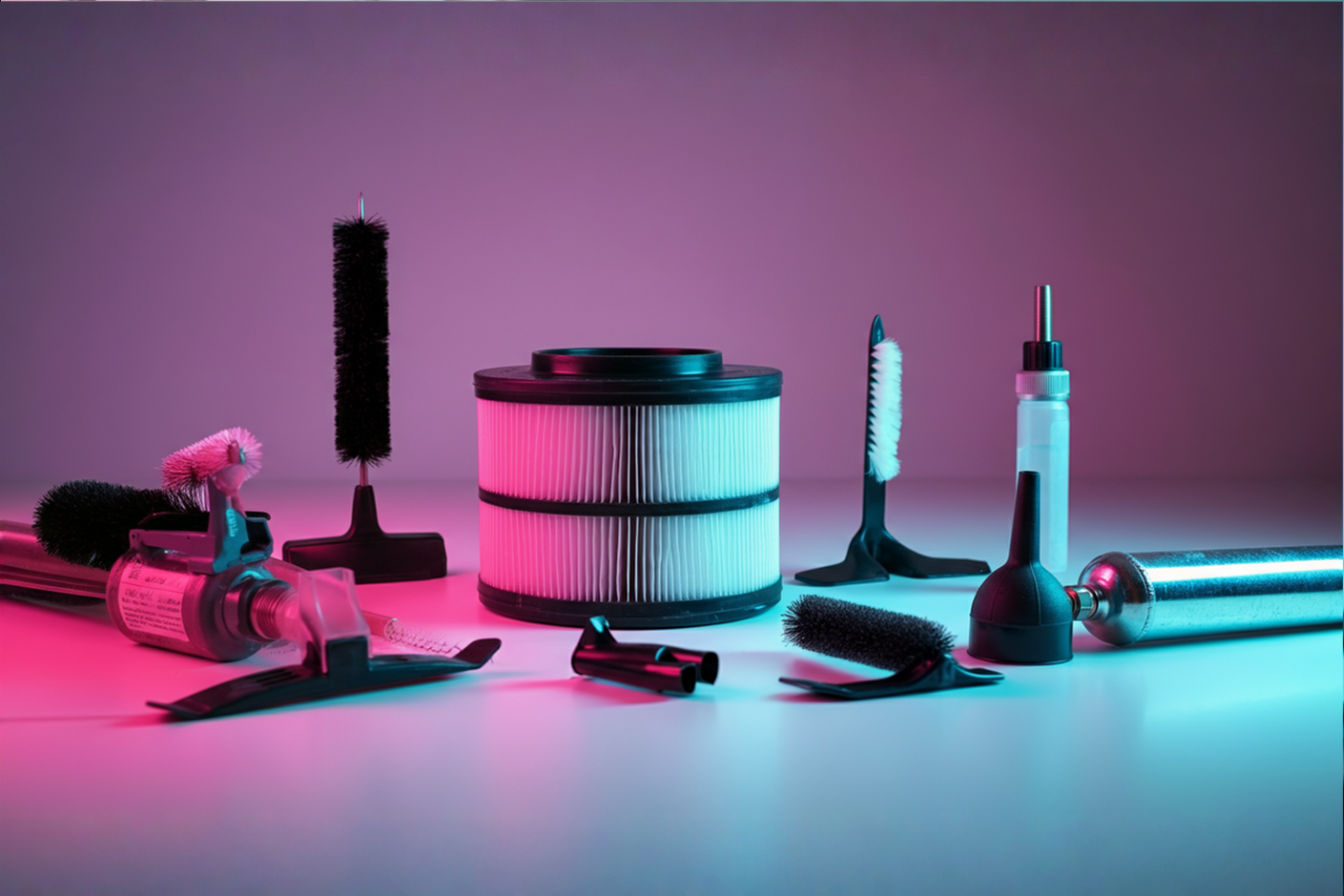Extended Battery Hacks: Legitimate Methods to Increase Cordless Vacuum Runtime
Is your cordless vacuum dying mid-clean? These proven battery-saving techniques could double your runtime without voiding warranties. Learn the secrets to longer-lasting performance.
This post may contain affiliate links. If you make a purchase through these links, we may earn a commission at no additional cost to you.
The freedom of cordless vacuum cleaners comes with a significant trade-off: limited runtime. As more households switch from traditional corded models, the quest for extended battery life has become increasingly important. Mastering battery optimization can mean the difference between completing your cleaning tasks and running out of power mid-task.
These compact cleaning machines offer unmatched convenience, but their lithium-ion batteries often struggle to deliver the runtime many users expect. Fortunately, numerous legitimate techniques exist to maximize cordless vacuum performance without voiding warranties or risking damage. By understanding the science behind battery technology and implementing proven maintenance strategies, users can significantly extend their vacuum’s operational time.
This comprehensive guide explores authentic methods to enhance cordless vacuum runtime, debunking common myths while focusing on practical solutions. Whether you’re dealing with premature battery drain or seeking to prevent performance degradation, these techniques offer real results for extending your cleaning sessions.
Understanding Cordless Vacuum Battery Technology
Lithium-Ion Battery Fundamentals
Modern cordless vacuums rely primarily on lithium-ion (Li-ion) battery technology, which offers superior energy density and minimal memory effect compared to older alternatives. These sophisticated power cells operate through a complex chemical process where lithium ions move between electrodes during charging and discharging cycles.
The typical cordless vacuum battery consists of multiple cells arranged in series or parallel configurations. This arrangement determines both voltage output and capacity, directly impacting runtime. Higher-capacity units might feature 18V or 22.2V configurations, while budget models often operate at 14.4V.
Runtime measurement reflects the duration a fully charged unit can operate under standard conditions. Manufacturers typically specify this in minutes at specific power settings. However, real-world performance varies based on cleaning mode, floor type, and attachment usage.
Factors Affecting Battery Performance
Three primary factors influence cordless vacuum runtime: temperature, discharge rate, and age. Extreme temperatures reduce chemical reaction efficiency within battery cells, while high-power modes increase discharge rates, shortening operational time.
Battery degradation occurs naturally over time through chemical processes. Each charge-discharge cycle slightly reduces capacity, though proper maintenance can slow this decline significantly. Environmental conditions and usage patterns also play crucial roles in determining long-term performance.
Understanding these variables allows users to adapt their cleaning habits appropriately. Small adjustments in vacuum operation can yield substantial improvements in effective runtime.
Proper Charging Techniques for Maximum Runtime
The 20-80% Rule for Battery Longevity
The optimal charging strategy involves maintaining battery levels between 20% and 80% whenever possible. This practice, borrowed from electric vehicle technology, minimizes stress on battery cells and extends overall lifespan.
Fully depleting lithium-ion batteries creates unnecessary strain on cell chemistry. Similarly, constantly charging to 100% can accelerate degradation through increased voltage stress. Many newer cordless vacuums include battery management systems that automatically prevent overcharging, but users should still avoid leaving units plugged in indefinitely.
Implementing this charging technique requires mindfulness about battery status during cleaning sessions. Consider scheduling shorter cleaning periods or dividing tasks across multiple sessions to maintain optimal charge levels.
Temperature Management During Charging
Charging temperatures significantly impact battery health and capacity. Ideal charging occurs between 50°F and 86°F (10°C to 30°C). Extreme heat or cold during charging can permanently damage battery cells.
Never charge a vacuum immediately after intensive use when the battery remains hot. Allow sufficient cooling time before connecting to power. Similarly, avoid charging in extremely cold environments like unheated garages during winter months.
Some advanced models feature temperature monitoring systems that prevent charging under adverse conditions. Even without these features, users can protect their batteries by being mindful of environmental factors during the charging process.
Smart Charging Timing Strategies
Strategic charging timing optimizes battery health and ensures availability when needed. Rather than charging immediately after each use, wait until the battery drops to approximately 30% before reconnecting.
For infrequent users, avoid storing units with full charges. Extended storage at 100% capacity accelerates natural degradation processes. Instead, maintain a 40-60% charge level for optimal storage conditions.
Consider establishing a regular charging schedule aligned with cleaning routines. This approach prevents unnecessary charge cycles while ensuring adequate power for scheduled tasks.
Pre-Cleaning Battery Optimization Strategies
Effective Battery Conditioning Routines
While traditional battery conditioning methods don’t apply to modern lithium-ion cells, certain practices can optimize performance and extend runtime. Before first use, many manufacturers recommend fully charging new units for 24 hours to calibrate battery management systems.
Regular calibration involves fully discharging the battery once every 3-4 months, then charging to 100%. This process recalibrates internal monitoring systems for more accurate runtime predictions. Avoid frequent deep discharges, as they stress battery cells.
Some high-end models feature built-in conditioning programs. These automated routines balance cell voltages and optimize capacity without user intervention. Check your vacuum’s manual for specific conditioning features and recommendations.
Maintaining Optimal Battery Contacts
Clean battery contacts ensure efficient power transfer and prevent runtime losses. Dust accumulation and oxidation can create resistance, forcing batteries to work harder during operation.
Monthly inspection of contact points helps identify potential issues before they impact performance. Use a soft, dry cloth to remove visible debris. For stubborn contamination, apply electronics-specific contact cleaner sparingly.
Never use water or household cleaners on battery contacts, as moisture can cause corrosion and short circuits. Ensure contacts are completely dry before reinserting batteries or charging.
Strategic Storage Between Uses
Proper storage practices significantly influence battery longevity and runtime consistency. Store cordless vacuums in climate-controlled environments away from direct sunlight and extreme temperatures.
For extended storage periods, maintain batteries at approximately 50% charge. This level minimizes stress while preserving enough power to prevent deep discharge damage. Check stored units monthly and recharge if necessary.
Consider removing batteries from vacuums during long-term storage. This practice prevents potential drain from electronic components and facilitates easier inspection of both battery and device contacts.
Smart Power Management During Use
Optimizing Eco and Turbo Modes
Strategic mode selection dramatically impacts runtime while maintaining cleaning effectiveness. Eco or standard modes typically offer 2-3 times longer operation than turbo settings. Reserve high-power modes for particularly soiled areas or deep carpet cleaning.
Assess cleaning requirements before starting. Hard floors generally require less suction power than carpets, allowing for extended eco mode usage. Some advanced models automatically adjust power based on surface detection, but manual optimization often yields better results.
Create cleaning strategies that minimize turbo mode usage. Start with standard power, identifying areas requiring additional suction, then return with turbo mode only where necessary. This approach conserves battery power while ensuring thorough cleaning.
Surface-Specific Power Settings
Different flooring types demand varying suction levels for effective cleaning. Hard floors typically require 30-50% less power than carpets, presenting significant energy-saving opportunities.
Tile, hardwood, and laminate surfaces respond well to lower power settings, especially when dealing with surface debris. Carpets, particularly high-pile varieties, need increased suction to extract embedded dirt effectively.
Many cordless vacuums include surface-specific settings or automatic detection features. Understanding these capabilities allows users to optimize power consumption based on cleaning environment. Manual adjustment based on visual assessment often provides the most efficient approach.
Efficient Cleaning Patterns
Systematic cleaning patterns reduce redundant passes and minimize battery drain. Start with systematic coverage of each room, working from farthest corners toward entrances to avoid retreading cleaned areas.
Adopt a consistent zigzag or parallel pattern for open spaces. This approach ensures complete coverage while minimizing unnecessary movement. For furniture-heavy areas, clean accessible sections thoroughly before moving items rather than repeatedly shifting between tasks.
Pre-cleaning preparation enhances efficiency. Remove small obstacles and declutter floors before vacuuming. This preparation reduces start-stop cycles that consume additional battery power.
Maintenance Hacks to Preserve Battery Health
Filter Cleaning Impact on Performance
Clogged filters force motors to work harder, dramatically reducing runtime and accelerating battery drain. Regular filter maintenance can improve battery efficiency by 20-30% compared to neglected units.
Most cordless vacuums feature washable filters requiring monthly cleaning under normal use. Follow manufacturer guidelines for proper cleaning techniques, ensuring filters dry completely before reinstallation. Some models include filter cleaning indicators to prompt maintenance.
HEPA filters require special attention. While some are washable, others need replacement at specified intervals. Using aftermarket filters might affect performance, so prioritize manufacturer-recommended replacements.
Brush Roll Maintenance for Reduced Motor Load
Tangled hair and debris wrapped around brush rolls create significant drag on vacuum motors. This increased resistance forces batteries to deliver more power, substantially reducing runtime.
Weekly brush roll inspection and cleaning prevent excessive buildup. Use scissors or specialized cleaning tools to remove wrapped materials. Some models feature self-cleaning brush systems or easy-release mechanisms for simplified maintenance.
Worn brush bristles also impact efficiency. Replace brush rolls showing significant wear or damage. Proper brush condition ensures optimal cleaning performance while minimizing battery strain.
Clog Prevention Techniques
Internal clogs represent a major cause of reduced runtime and performance. Even partial blockages can increase power consumption by 40% or more.
Regularly inspect suction paths, wands, and attachment connections for obstructions. Clear visible debris immediately to prevent further accumulation. Pay special attention to transition points where diameter changes occur, as these areas commonly trap debris.
Avoid vacuuming large particles or wet materials that might cause blockages. Pre-sweep visible debris and allow spills to dry completely before vacuuming. These preventive measures protect both battery life and overall vacuum functionality.
Environmental Factors and Battery Performance
Optimal Operating Temperature Range
Cordless vacuum batteries perform best within specific temperature ranges. Ideal operating conditions fall between 68°F and 77°F (20°C to 25°C). Performance drops significantly outside this window.
Cold temperatures slow chemical reactions within battery cells, reducing available power and runtime. Conversely, excessive heat accelerates degradation and can cause permanent damage. Some units include thermal protection systems that limit operation in extreme conditions.
When cleaning in temperature-sensitive environments, allow your vacuum to acclimate before use. Store units in climate-controlled areas when possible, especially before extended cleaning sessions.
Managing Humidity Effects
High humidity affects both battery performance and motor efficiency. Moisture can create resistance in electrical connections and potentially damage sensitive components.
In humid environments, ensure proper ventilation during charging and storage. Avoid using cordless vacuums immediately after bringing them from air-conditioned spaces into humid areas, as condensation might form.
Regular inspection of seals and gaskets helps prevent moisture intrusion. Replace damaged components promptly to maintain optimal performance in varying humidity conditions.
Seasonal Storage Considerations
Seasonal changes require adjusted storage practices for optimal battery preservation. Winter storage demands special attention to prevent cold damage and maintain proper charge levels.
During extended storage periods, maintain batteries at 40-50% charge. Check monthly and recharge as needed to prevent deep discharge. Store units in temperature-stable environments away from heating vents or cold exterior walls.
Summer storage presents different challenges. Avoid locations prone to heat buildup like attics or garages. High temperatures accelerate chemical degradation even when units remain unused.
Advanced Techniques and Accessories
Strategic Secondary Battery Purchases
Investing in additional batteries offers immediate runtime extension without compromising cleaning routines. Secondary batteries effectively double operational time while allowing primary cells to rest.
When purchasing extra batteries, prioritize manufacturer-approved options. Third-party alternatives might offer cost savings but often lack optimal compatibility and safety features. Some manufacturers offer extended warranty coverage for original accessories.
Implement a rotation system between multiple batteries. This approach distributes wear evenly and extends overall lifespan. Label batteries with purchase dates to track performance over time.
Battery Management Systems
Modern charging docks and stations incorporate sophisticated battery management features. These systems optimize charging cycles, balance cell voltages, and prevent overcharging automatically.
Some advanced docks offer rapid charging capabilities without compromising battery health. Others include cooling features to maintain optimal temperatures during charging. Understanding available options helps select appropriate accessories for specific needs.
Consider multi-bay charging stations for households using multiple batteries. These units streamline charging processes while providing visual indicators of battery status.
Compatible Third-Party Solutions
While manufacturer accessories ensure optimal compatibility, some third-party solutions offer valuable functionality. Research thoroughly before purchasing aftermarket products to avoid potential damage or warranty issues.
External battery packs designed for specific vacuum models can provide extended runtime for special cleaning projects. These solutions typically attach to vacuum bodies without requiring modifications.
Universal charging adapters might offer convenience for multi-brand households. Ensure any third-party charger meets original equipment specifications for voltage and current output.
Troubleshooting Battery Issues
Diagnosing Premature Battery Drain
Rapid battery depletion often indicates underlying issues beyond normal wear. Systematic diagnosis helps identify whether problems stem from battery degradation or operational factors.
Monitor runtime consistency across multiple cleaning sessions. Sudden decreases might indicate failing cells or electrical problems. Compare performance against manufacturer specifications adjusted for age and usage patterns.
Check for excessive heat generation during operation. Overheating suggests potential motor issues or internal resistance problems requiring professional attention.
Replacement vs Repair Decisions
Battery replacement represents a significant investment. Consider replacement when runtime drops below 60% of original specifications or when cells fail to hold charge effectively.
Professional repair services might offer cell replacement for certain models. This approach can cost less than complete battery replacement while restoring performance. However, availability varies by manufacturer and model.
Warranty coverage often includes battery replacement for premature failures. Document performance issues thoroughly when pursuing warranty claims.
Understanding Error Codes
Modern cordless vacuums display error codes indicating specific battery or system issues. Familiarize yourself with model-specific codes to address problems promptly.
Common codes relate to temperature warnings, charging failures, or cell imbalances. Consult user manuals for detailed explanations and recommended actions. Some issues resolve through simple resets or cleaning procedures.
Advanced diagnostics might require manufacturer software or specialized tools. Contact authorized service centers for persistent error conditions.
Conclusion
Maximizing cordless vacuum runtime requires a comprehensive approach combining proper charging techniques, smart usage strategies, and diligent maintenance. The most effective battery hacks focus on prevention rather than correction, establishing habits that preserve battery health from day one.
Regular maintenance routines, including filter cleaning and brush roll care, yield immediate improvements in runtime while extending overall battery lifespan. Environmental awareness and strategic power management further optimize performance across varying conditions.
As battery technology continues evolving, these fundamental principles remain relevant. Future improvements might increase capacity and durability, but proper care will always enhance cordless vacuum performance. By implementing these legitimate methods, users can achieve significantly longer runtimes and more satisfying cleaning experiences with their cordless vacuums.

